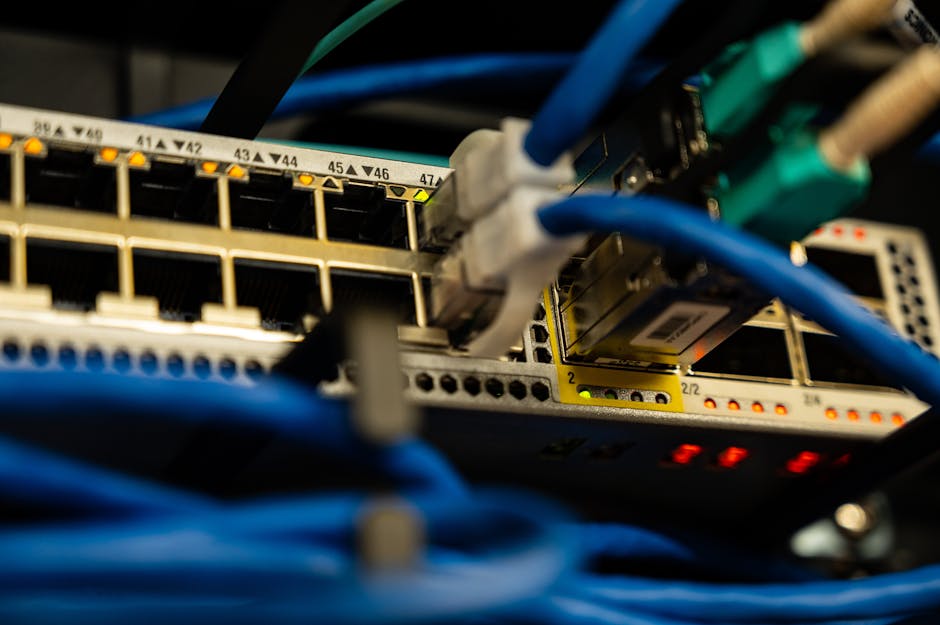The Health Insurance Portability and Accountability Act (HIPAA) plays a critical role in the healthcare industry. For organizations seeking Austin HIPAA compliance, it’s essential to understand how these standards protect patient privacy and safeguard sensitive patient information. In today’s digital landscape, partnering with experts in is crucial for maintaining the confidentiality and integrity of protected health information (PHI).
Working with a trusted Austin managed IT provider is essential when conducting a comprehensive HIPAA risk assessment for several reasons:
- Safeguarding Patient Data: Identifying vulnerabilities in data handling helps prevent unauthorized access to PHI.
- Maintaining Compliance: Regular assessments ensure adherence to HIPAA regulations, minimizing legal risks.
- Avoiding Consequences: Non-compliance can lead to severe penalties, including fines ranging from $137 to over $2 million per violation.
Data breaches pose significant threats. The IBM Security Cost of a Data Breach Report highlights that compromised credentials and phishing attacks are leading causes. The average cost of a data breach has reached approximately $4.45 million, emphasizing the financial implications of inadequate security measures.
Healthcare organizations must prioritize HIPAA compliance through proactive risk assessments to protect patient data effectively and maintain trust in their services.
Understanding HIPAA Compliance
The HIPAA Security Rule sets important standards for protecting sensitive patient information, specifically protected health information (PHI) and electronic PHI (ePHI). Following the Security Rule is not just a legal requirement; it’s also a vital framework for maintaining patient privacy and ensuring the confidentiality, integrity, and availability of sensitive data.
Key requirements of the HIPAA Security Rule include:
- Administrative Safeguards: Policies and procedures designed to manage the selection, development, implementation, and maintenance of security measures.
- Physical Safeguards: Measures that protect electronic systems and facilities from unauthorized physical access.
- Technical Safeguards: Technologies that protect ePHI and control access to it. This includes encryption, secure user authentication methods, and audit controls.
Protected Health Information (PHI) refers to any health information that can be linked to an individual. This includes various types of data such as demographics, medical history, test results, and treatment information. Electronic Protected Health Information (ePHI) is a specific category of PHI that exists in electronic form.
It’s essential for healthcare organizations seeking compliance to grasp these definitions. Not following these standards can result in serious consequences like hefty fines and damage to reputation.
The Importance of Risk Assessments in Protecting Patient Data
Risk assessments are crucial in the healthcare industry for safeguarding sensitive information and preventing data breaches. By conducting thorough assessments, organizations can identify weaknesses in their systems and take appropriate security measures before a breach happens.
Understanding the Financial Impact of Non-Compliance
The financial consequences of failing to comply with data protection regulations are significant. According to the IBM Security Cost of a Data Breach Report:
- The average cost of a data breach is around $4.45 million, with costs rising to $9.48 million for breaches that occur in the U.S.
- Compromised credentials and phishing attacks are two of the main causes behind these incidents, highlighting the importance of proactive risk management.
Preserving Patient Trust Through Effective Risk Management
In addition to avoiding hefty fines, effective risk assessments also play a vital role in maintaining patient trust. As awareness about data protection grows, patients expect healthcare providers to prioritize their privacy. A single data breach can irreparably harm this trust and result in loss of clients.
By implementing strong security measures based on comprehensive risk assessments, healthcare organizations can:
- Protect protected health information (PHI)
- Improve compliance with HIPAA regulations
- Create a culture of security that reassures patients their information is handled carefully
These proactive actions greatly contribute to safeguarding both patient data and the reputation of healthcare providers.
Your Guide to Conducting a Comprehensive HIPAA Risk Assessment
Conducting a HIPAA risk assessment is essential for identifying vulnerabilities in the handling of Protected Health Information (PHI) and ensuring compliance with regulations. Follow these steps for a comprehensive evaluation:
Define the Scope
- Determine which systems, processes, and locations will be included in the assessment.
- Identify the types of ePHI involved.
Identify Threats and Vulnerabilities
- Analyze potential threats such as cyberattacks, natural disasters, or insider threats.
- Document existing vulnerabilities in physical, administrative, and technical safeguards.
Assess Existing Security Measures
- Review current security measures protecting ePHI.
- Evaluate their effectiveness against identified threats.
Determine Threat Likelihood and Impact
- Use qualitative or quantitative methods to assess how likely each identified threat is to occur.
- Consider both the potential impact on patient data and organizational reputation if a breach occurs.
Calculate Risk Levels
- Combine likelihood and impact assessments to prioritize risks.
- Assign risk levels that help in decision-making for mitigation strategies.
Document Findings
- Create a detailed report summarizing the findings of the risk assessment.
- Include identified vulnerabilities, risk calculations, and any relevant evidence from the assessment process.
Develop a Risk Management Plan
- Formulate strategies to mitigate identified risks.
- Prioritize actions based on risk levels calculated earlier.
Implement Ongoing Monitoring
- Establish continuous monitoring mechanisms to ensure security measures remain effective.
- Schedule regular reviews of the risk management plan to adapt to evolving threats.
Healthcare organizations can enhance their security posture while ensuring HIPAA compliance through effective risk analysis and robust security measures.
Common Challenges Faced During HIPAA Risk Assessments and How to Overcome Them
Conducting a comprehensive HIPAA risk assessment presents several challenges for healthcare organizations. Below are common obstacles encountered during the process:
Limited Understanding of HIPAA Requirements
Many staff members may lack familiarity with HIPAA regulations, which can hinder the effectiveness of the risk assessment. This gap in knowledge can lead to misunderstandings regarding what constitutes protected health information (PHI) and the necessary safeguards required.
Resource Constraints
Organizations often face limitations in personnel, budget, and time. These constraints can prevent thorough evaluations of security measures or the implementation of effective risk management strategies.
Inadequate Policies
Existing policies may not align with current HIPAA requirements or fail to address emerging threats. This inadequacy complicates the assessment process and increases vulnerabilities within the organization.
Strategies to Address Challenges
To navigate these challenges effectively, organizations should consider the following strategies:
Investing in Staff Training:
- Regular training sessions can enhance staff understanding of HIPAA compliance requirements.
- Interactive workshops and e-learning modules can reinforce key concepts and improve overall preparedness.
Consulting Experts or Legal Counsel:
- Engaging legal counsel or compliance experts provides tailored guidance specific to organizational needs.
- Their expertise helps identify gaps in compliance, ensuring a more comprehensive assessment process.
Utilizing Third-Party Vendors or Automated Tools:
- Leveraging third-party vendors allows for objective assessments conducted by experienced professionals.
- Automated tools streamline data collection, analysis, and reporting processes, enhancing accuracy and efficiency.
Implementing these strategies not only addresses common challenges but also fosters a culture of compliance within healthcare organizations, ensuring patient data remains secure and regulations are met effectively.
Best Practices for Effective HIPAA Risk Assessments
Conducting effective HIPAA risk assessments requires adherence to established best practices. These practices not only enhance compliance but also significantly mitigate security vulnerabilities in healthcare settings. Recommended strategies include:
Mapping ePHI Flows
Understand how electronic Protected Health Information (ePHI) moves across devices and networks. This mapping identifies potential weak points in data handling and transmission, ensuring that all pathways are secure.
Detailed Risk Analyses
Regularly perform comprehensive risk analyses that consider various threats, including cyberattacks and natural disasters. This proactive approach helps organizations anticipate potential breaches and prepare appropriate responses.
Implementing Technical Safeguards
Utilize technical measures such as backup systems and audit logging to protect ePHI. Backup systems ensure data recovery in case of loss, while audit logs provide a record of access and usage, facilitating monitoring for unauthorized access.
Regular Reviews and Updates
Security measures should not be static. Regularly reviewing and updating these protocols is crucial for adapting to new threats and technological advancements. This practice reinforces an organization’s security posture, maintains compliance, and fosters patient trust.
Integrating these best practices into the risk assessment process, healthcare organizations can create a robust framework that protects sensitive information while adhering to HIPAA regulations. Addressing security vulnerabilities effectively enhances not only compliance but also the overall integrity of patient data management.
Leveraging Technology: Online Tools for Efficient HIPAA Risk Assessment
Adopting online HIPAA assessment tools significantly enhances the efficiency and effectiveness of the risk assessment process. These tools streamline data collection and reporting, enabling organizations, including Austin managed IT service providers, to manage their assessments with greater accuracy and speed. Key advantages include:
- Automated Data Collection: Automated tools minimize manual input, reducing human error and ensuring data integrity.
- Standardized Assessments: Consistency across assessments is achieved, facilitating comparisons over time.
- Enhanced Reporting Capabilities: Comprehensive reporting features allow for insightful analysis of risks, vulnerabilities, and compliance levels.
Documentation Practices and Ongoing Monitoring for Long-Term Compliance
Thorough documentation is essential for an effective HIPAA risk assessment. It provides a clear understanding of the identified risks, actions taken, and compliance measures implemented. Here are some key aspects to consider:
Detailed Record-Keeping
Maintain records that capture:
- The scope of each risk assessment.
- Identified threats and vulnerabilities.
- Assessment results and evaluations of existing security measures.
- Risk management plans developed and executed.
Guidelines for Future Activities
Proper documentation not only helps with current assessments but also guides future risk management activities. This includes:
- Keeping logs of decisions made during assessments.
- Recording changes in policies or procedures as a result of findings.
- Storing historical data for reference during subsequent assessments.
Establishing Routine Monitoring Systems
Implement systems that facilitate ongoing compliance monitoring. Consider:
- Schedule regular reviews of documentation to ensure accuracy and relevance.
- Utilize automated tools to track compliance with HIPAA requirements continually.
- Create feedback loops where staff can report new vulnerabilities or incidents promptly.
Integrating these practices into your organization’s culture fosters a proactive approach to compliance. Regular updates to documentation reflect changes in technology, processes, or regulations, ensuring that patient data remains secure. Emphasizing the importance of both documentation and ongoing review processes enables organizations to maintain robust compliance frameworks while effectively protecting sensitive information.
Prioritizing Compliance Through Proactive IT Measures
Businesses within the healthcare sector must prioritize compliance efforts to safeguard patient data. The importance of implementing comprehensive risk management strategies cannot be overstated. A proactive approach not only addresses current vulnerabilities but also anticipates future risks, ensuring robust protection against data breaches. Organizations focused on cybersecurity in Austin can leverage advanced security measures to enhance their compliance efforts and protect sensitive information.
Next Steps:
- Evaluate Current Practices: Review existing policies and procedures related to HIPAA compliance.
- Conduct Regular Assessments: Schedule annual risk assessments and update them after any significant operational changes.
- Invest in Training: Provide staff training on HIPAA requirements and cybersecurity awareness to foster a culture of compliance.
- Leverage Technology: Utilize online assessment tools to streamline the risk assessment process and enhance data collection efficiency.
- Consult Experts: Engage with legal counsel or third-party vendors specializing in HIPAA compliance for additional insights and support.
Taking these steps will not only help comply with HIPAA regulations but will also foster trust among patients, ultimately enhancing the reputation of healthcare organizations. Protecting patient data is an ongoing commitment that requires vigilance and proactive measures.
FAQs
What is HIPAA and why is it important in the healthcare industry?
HIPAA, the Health Insurance Portability and Accountability Act, is a federal law that establishes standards for protecting sensitive patient information. Its significance lies in ensuring the confidentiality, integrity, and availability of protected health information (PHI), which is crucial for maintaining patient trust and compliance in the healthcare sector.
What are the key requirements of the HIPAA Security Rule?
The HIPAA Security Rule outlines essential requirements for safeguarding electronic protected health information (ePHI). Key components include implementing administrative safeguards, physical safeguards, and technical safeguards to protect ePHI from unauthorized access and breaches.
How do risk assessments help prevent data breaches?
Risk assessments are vital in identifying potential threats and vulnerabilities to PHI. By evaluating existing security measures and calculating risk levels, organizations can implement targeted strategies to mitigate risks, thereby preventing data breaches and ensuring compliance with HIPAA regulations.
What are some common challenges faced during HIPAA risk assessments?
Common challenges include limited understanding of HIPAA requirements, resource constraints, and inadequate policies. To overcome these obstacles, organizations can invest in staff training, consult with experts or legal counsel, and utilize third-party vendors or automated tools for comprehensive evaluations.
What best practices should be followed for effective HIPAA risk assessments?
Cybersecurity in Austin best practices include mapping ePHI flows across devices and networks, conducting detailed risk analyses that account for cyberattacks and natural disasters, implementing technical safeguards like backup systems and audit logging, and regularly reviewing security measures to adapt to evolving threats.
How can technology enhance the efficiency of HIPAA risk assessments?
Online assessment tools streamline data collection and reporting processes. Look for a solution that allows organizations to create customized assessments to enhance participation rates through technology-driven approaches, ultimately improving the overall efficiency of the risk assessment process.








